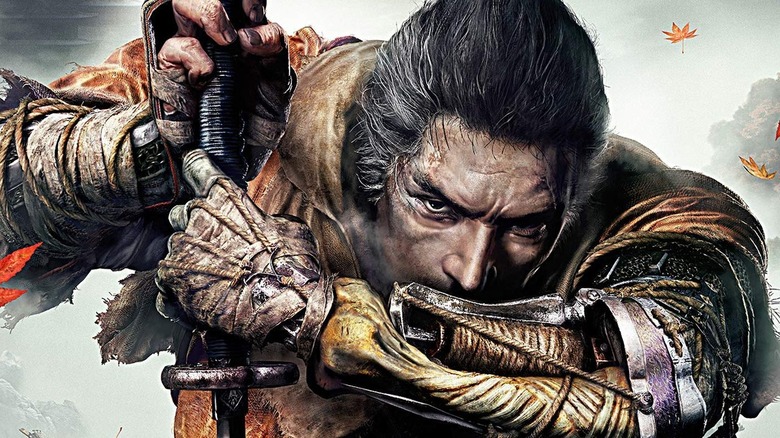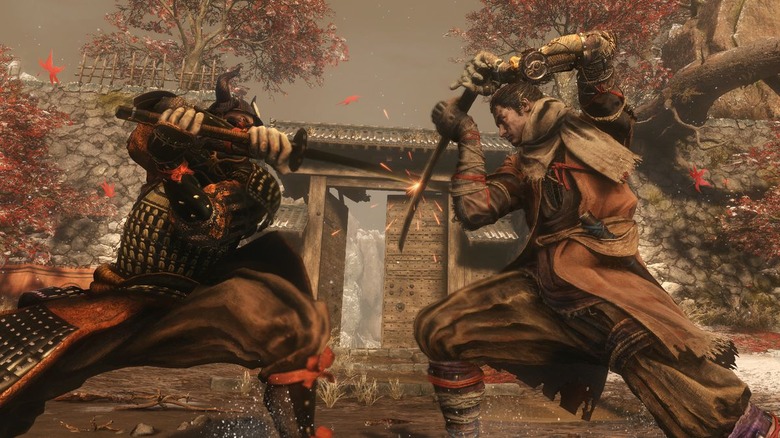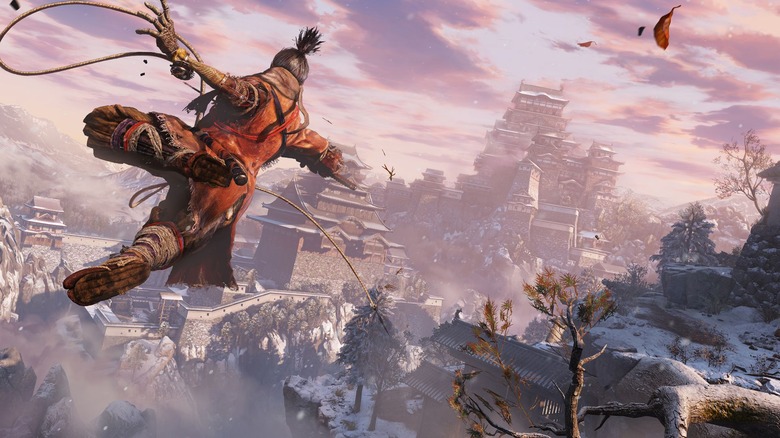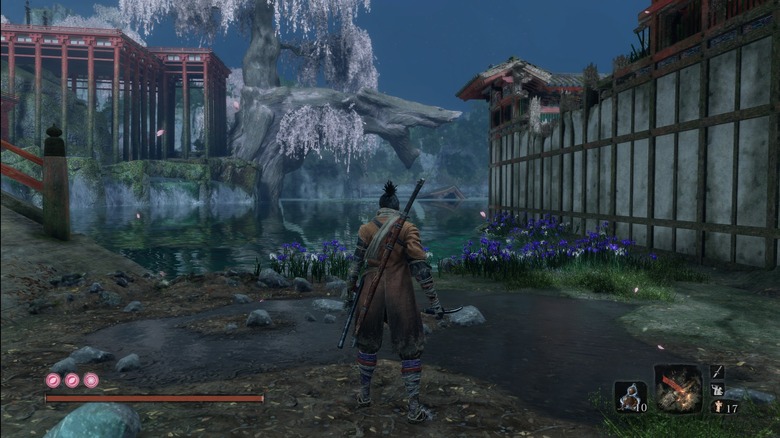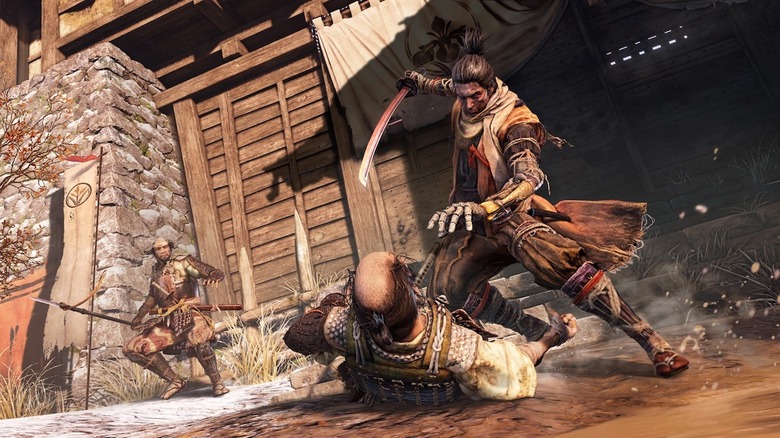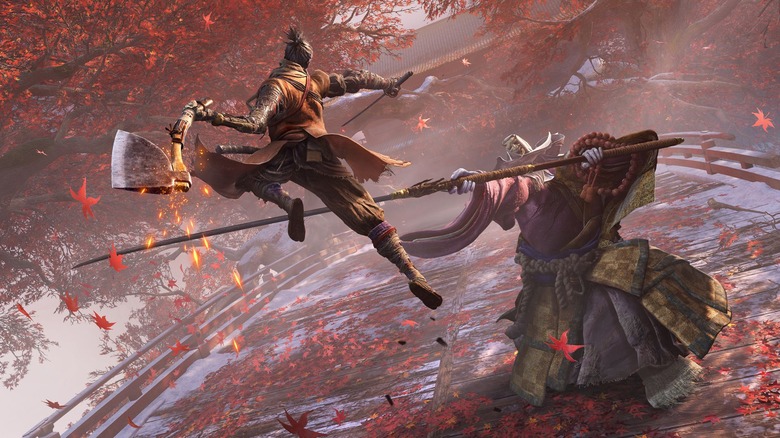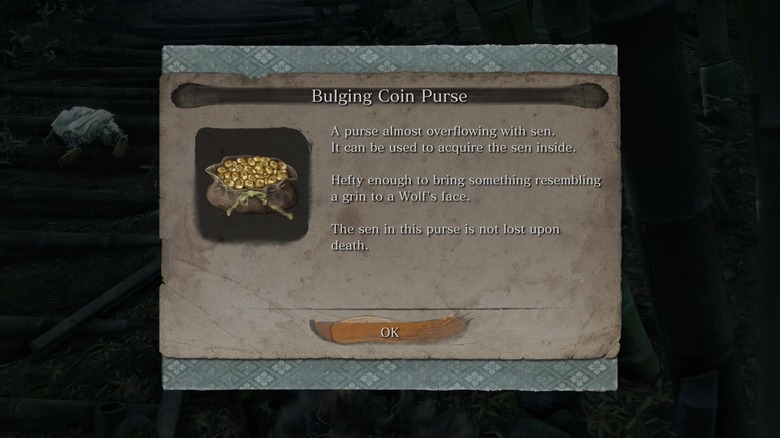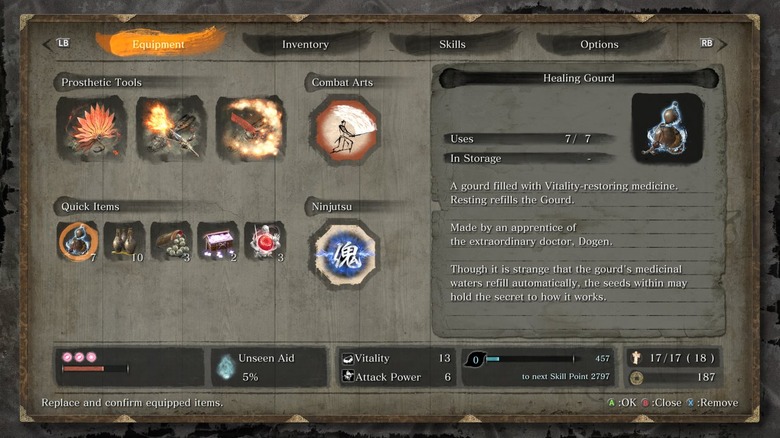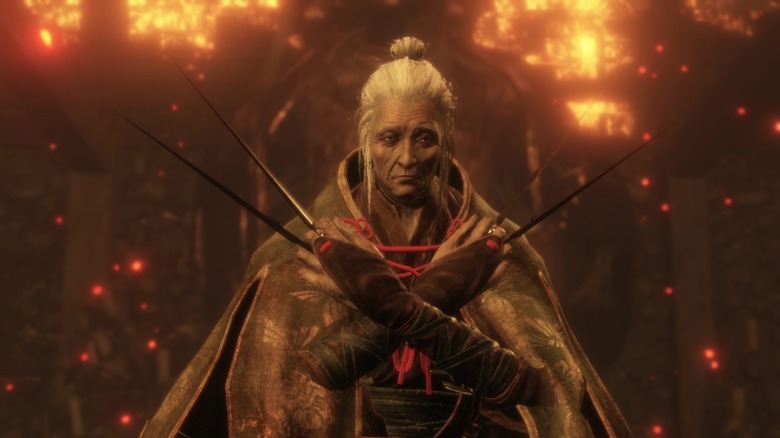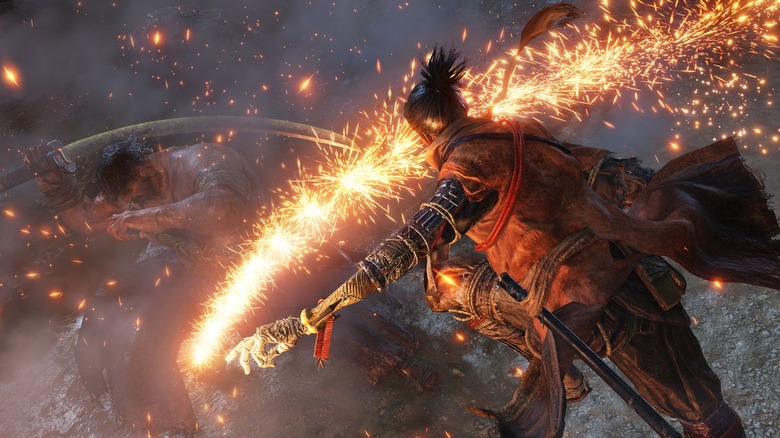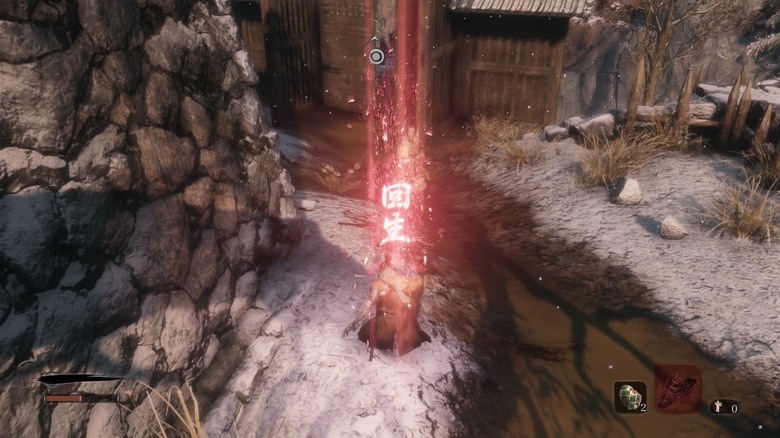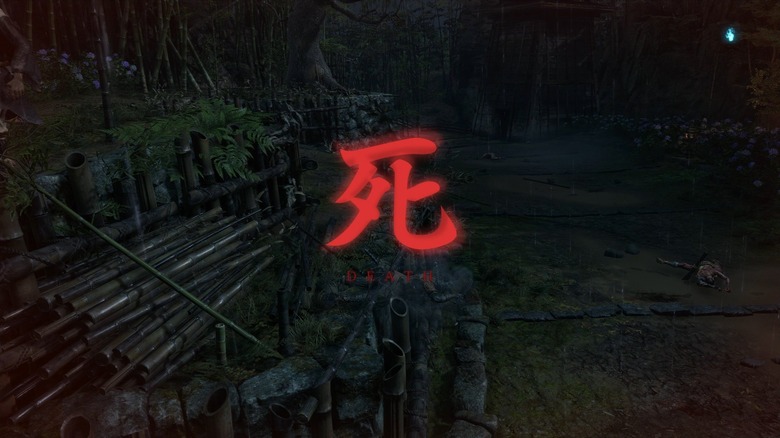Expert Tips Sekiro: Shadows Die Twice Doesn't Tell You
Once again, FromSoftware has reappeared to make some gamers weep tears of joy over a new haunting world to explore and new ways to die horribly doing it, and make some gamers just weep in general. Angels to some, demons to others, to quote a famous Cenobite. In true FromSoftware fashion, Sekiro: Shadows Die Twice is a uniquely and terrifyingly difficult game that will test even the most seasoned gamer's patience and skill. But also like every FromSoftware game, it's not even close to impossible.
Instead, even for Soulsborne veterans, Sekiro requires learning a few new skills and taking some new information into account, much of which even flies in the face of what players know from the studio's previous titles. We've collected a few of them here. They'll help, for sure, but trust us, you've still got your work cut out for you, pun fully intended.
Unlearn what you have learned
The Souls games stretch all the way back to Demon's Souls on the PlayStation 3, and while obviously settings and characters have changed, many of the gameplay principles have been the same. Many players who've stuck with this series since the beginning have been honing these skills over the last ten years.
And now, you are going to throw most of it out the window.
Not only is Sekiro a very different game in terms of design and aesthetic from the Soulsborne games, but strategies and tactics that were crucial in those games will actively get you killed now. Waiting for enemies to make a move? Don't wait too long unless you want all that hard work building up Posture damage to disappear. Holding back because you're worried about Stamina? Forget that: you see a flashing Stamina bar, wail away. Breathlessly deciding to take on that last enemy in an area before healing up? Why? You can pause now! Breathe, heal up, strategize before going in.
You're still going to need a bottomless well of patience in Sekiro, and having a strong grasp on when and how to heal to get the most out of your arsenal is important, but approaching Sekiro like a Souls game is a really poor idea this time around.
Fall for anything
On the flipside, however, some things about the Souls games have changed to your benefit. Chances are good you'll approach the first major precarious drop in Sekiro with the same trepidation and fear of someone who just took a dare to jump off the Empire State building without a parachute. Before you start looking for equipment to strip off while visions of the well in Majula dance in your head, fear not. Fall damage is mostly a thing of the past.
Now, we say mostly because falling from a high enough place can count as falling into a bottomless pit, basically. But even then, you'll just return to your ledge, with a chunk of your health taken off. It's not the end of the world, but health is still precious here. For the most part, though, if you see an item 50 feet down, you can jump down without a care in the world.
Run to the water
On a similar note, the same goes for any time you come across a body of water. Seeing as you're a nimble samurai, and not a heavily armored revenant with a sword taller than most people, it should come as no surprise that, yes, you can swim now. You no longer need to fear sinking and dying.
As a matter of fact, relatively early on, it's an extremely good idea to make a water detour. When you access your first memory at the Hirata Estate, and you make your way down the cliffs, you'll come across a bridge being patrolled. Before getting too busy turning the guards into mozzarella with your sword, take a dive into the stream, and head off to the right. You'll see some tiny islands there, along with a shady dude hanging out in a blue pot who'll sell you some useful items.
Later on in the same area, if you're having serious troubles with the Shinobi Hunter, you can jump in the stream under the bridge leading to his area. If you swim off to the left, you can use your grappling hook to get you out of the stream, and into the next area without having to face him.
Fight smarter, not harder
One of the few Souls principles that still remains true in Sekiro it's that it is always better to face one enemy than many, and even with the ability to parry and deflect, even just two enemies can get overwhelming, fast. More often than not, though, you'll find yourself in killzones with five or more enemies who need to be cleared out before you can take on something a lot bigger roaming around. As such, stealth is definitely a mechanic you need to avail yourself of in Sekiro, but Assassin's Creed it isn't. The consequences of getting spotted can be harsh, but that assumes your enemies aren't near-sighted idiots who won't see a gory swordfight happening 50 feet away.
That's exactly how a lot of Sekiro's enemies are, though, and the smart way to deal with so many fights here is to thin the herd before the main event. Aside from the snitch-class enemies who will alert the entire area to your presence, getting an enemy's attention with shurikens will usually just draw the enemy closer to you so you can take them down one-on-one instead of, say, ten-on-one. Their buddies typically won't notice, and it'll save you a major headache.
Don't wander too far, now
While many of the bosses, large and small, will involve a stand-up fight, there are a few bosses where stealth is an option. They'll allow you to get a glorious deathblow before they even know what hit them, making the fight that comes after a lot easier. Now, typically, when things get rough in Sekiro, you can exit an area, heal up, prepare, and come back to give it another go. You can do that with bosses too, but with an important caveat: if you leave the area, their deathblow will regenerate.
Now, there are times when this works to your advantage, since it's sometimes better to retreat and regroup than risk blowing a precious resurrection on a losing battle. But there are situations where that deathblow doesn't come easy, and getting it a second time means losing your shot. Assess the risk before turning tail and running; don't do a lot of legwork for nothing.
Save your money
Sen, Sekiro's main currency, is cut in half upon death, with no way to get it back. But while Skill Points are essentially banked — once you've earned one, it doesn't go away when you die — what options do you have for your financial future? Enter coin purses.
See, you'll pick up the occasional coin purse out in the wild and, if you so desire, can cash it out right then and there for actual usable Sen, kinda like how small, big, and Boss Souls worked in previous FromSoftware games. But you'll notice that there are merchants who'll actually sell them for whatever the purse will hold, plus 10%. Feels vaguely like a ripoff until you make the crucial realization that while Sen is cut in half when you die, items aren't. And the purses count as an item, not money.
Of course, the purses aren't an unlimited resource, so you'll only want to buy them when you've got a lot of Sen burning a hole in your pocket, and a tough area ahead. But despite the upfront price tag, the purses are the definition of a sound investment.
Born(e) with every advantage
It's true with almost every game that you want to save the best stuff in your inventory for special occasions, and that's doubly so when it comes to Souls, especially considering just how much you have to go through to obtain many of them. Sekiro, on the other hand, does things a little differently, and you're going to have to make some tough calls in the hours ahead.
The overall good news is that items are quite a bit more widespread in Sekiro. There's something for you around pretty much every corner of the game as long as you're willing to look. That means, don't be stingy. If you're up against an enemy who's been staggering you with a single hit, and you know you'd stand a chance otherwise, by all means, use your items. There's way more where that came from.
There is a catch, however: you can only hold so many of a certain item at one time. You might have collected 99 health-regenerating pellets in your travels, but you will only ever have access to three at a time until you can rest at a shrine. Act accordingly.
Please try again later
Sekiro isn't necessarily an open-world game the way you might traditionally think of it, but it's a game where getting stuck in one area doesn't mean there isn't progress to be made elsewhere. Better yet, it's a game that doesn't penalize you from chipping away on one path, gaining newfound skills, items, and experience, then abandoning the quest to handle unfinished business in another area.
As such, if you find yourself hitting a wall at some point, and you're no closer to making progress, it's worth going for a change of scenery for a little bit, seeing how far you can go elsewhere. One, it means you don't burn yourself out on the game, which is the number one cause of controllers being flung through TVs. And two, it typically guarantees that no matter what you're doing, you're making progress on Wolf's development in some way, even if it's just grinding chickens to get the last skill point you need to buy a new counter.
The game opens up in a major way after you take down the Blazing Bull. Remember that you're never stuck on your current path when it does.
There's an app for that
The land of Ashina is full of evils beyond imagining, and all of them have no hesitation on turning our boy Wolf into mulch given the first opportunity. But while Wolf is in danger from everything, enemies are not a one-blade-slits-all situation.
As mentioned before, the game feels designed early on to proactively teach you the ropes, and you'll find specific enemies that are there to teach you about one particular thing. The shielded enemies can do some serious multi-hit damage if you're not able to put them down quickly enough. Looking around the area, however, will unearth the axe attachment for Wolf's arm which destroys shields, and leaves these guys wide open for an instant deathblow. The Shinobi Hunter right beyond them is a wall many players will run into time and time again until they realize later that the Mikiri Counter is tailor-made to demolish his lunge attack, knocking off a third of his posture in the process.
It might take a little trial and error, but if there's any small comfort in Sekiro, it's that the game literally gives you all the tools you'll need. It's just a matter of finding them.
Think on your sins
Nobody has made gamers fear and respect death like FromSoftware, and while that's still true in Sekiro, things work a little differently now that you have the ability to resurrect yourself. For starters, one thing it's important to remember is that there's no temporary invincibility period when you respawn. If you got killed by a boss at the start of a five-hit combo, and you rezz on hit number three, you're dead again, and the cooldown time for resurrection means you're not coming back.
What you want to do is handle it like Neo in The Matrix. Let your enemies think you're dead, and after a few seconds, they'll aimlessly wander off. Resurrect when their backs are turned, so you can either move in for a backstab or have enough breathing room to make a getaway and regroup. Either way, it's worth taking that extra minute to consider your options before spamming the rezz button.
Don't fear the reaper
But what about those situations where it's hopeless? What if you wandered into a nest of a half-dozen enemies, and death is certain? Well, just like real life, it's not a bad idea to have an end-of-life plan. And in Sekiro's case, there's a few things to consider.
The biggest thing to remember is not to be afraid of it. The game will make a big deal early on about death having consequences and, yes, it absolutely does; dying enough times will infect specific NPCs out in the world with Dragonrot, a particularly nasty wasting disease. But, you know, it's a FromSoftware game: death is inevitable, and it's designed to happen a lot. Best course of action? Ignore it.
At least at the beginning, before you find out about the Dragonrot cure from Emma at the Dilapidated Temple, there's not a whole lot you can do, and the worst thing that can happen is lowering your chances of Unseen Aid, which allows you to hold on to your money and XP after death. You'll get chances to make the cure later, which will allow you to start up and continue NPC sidequests, but cure droplets are limited, meaning you'll need to be stingy with them anyway. Cross that bridge when you come to it. Until then, the consequences of dying your best death don't outweigh the benefits of persistence.

